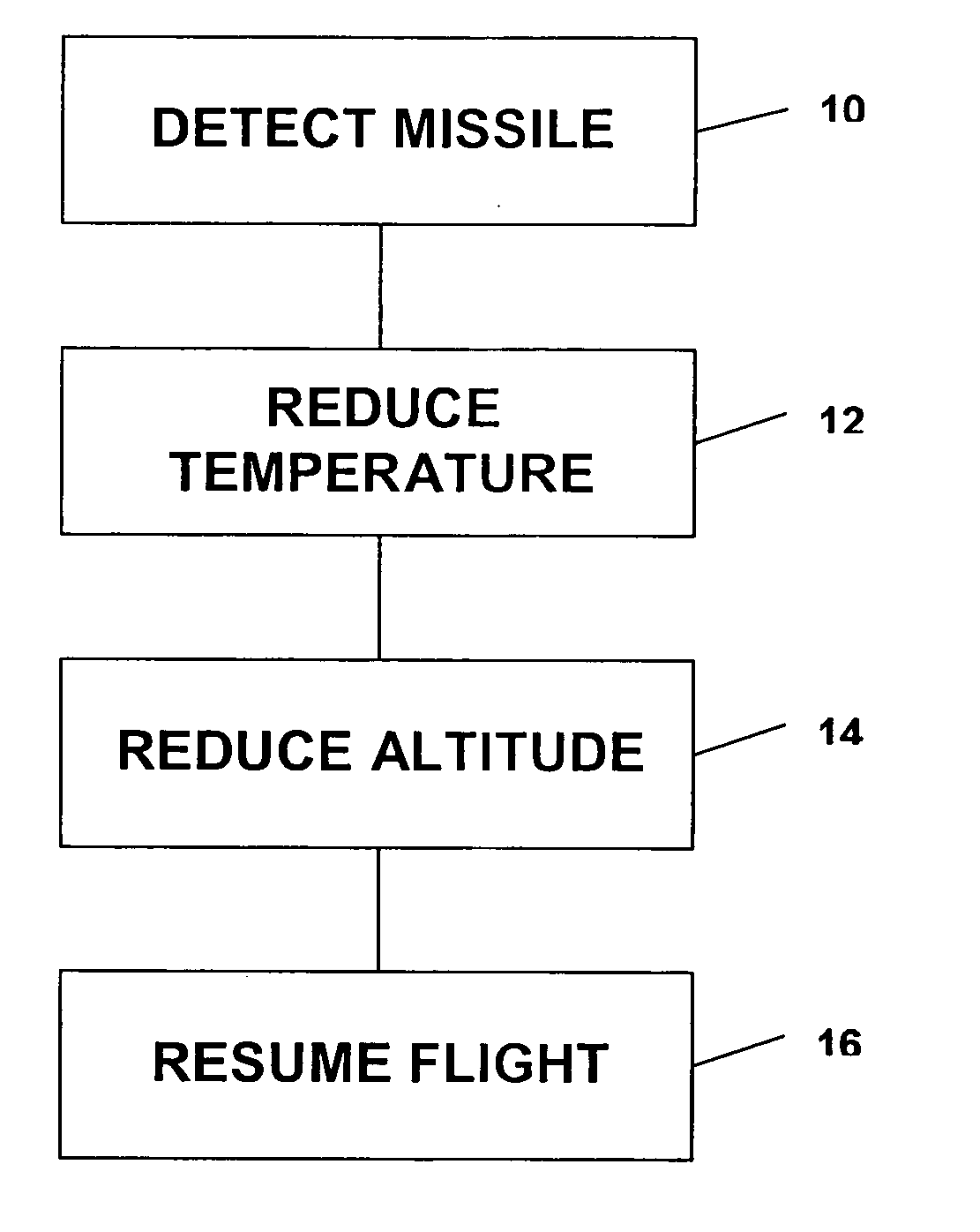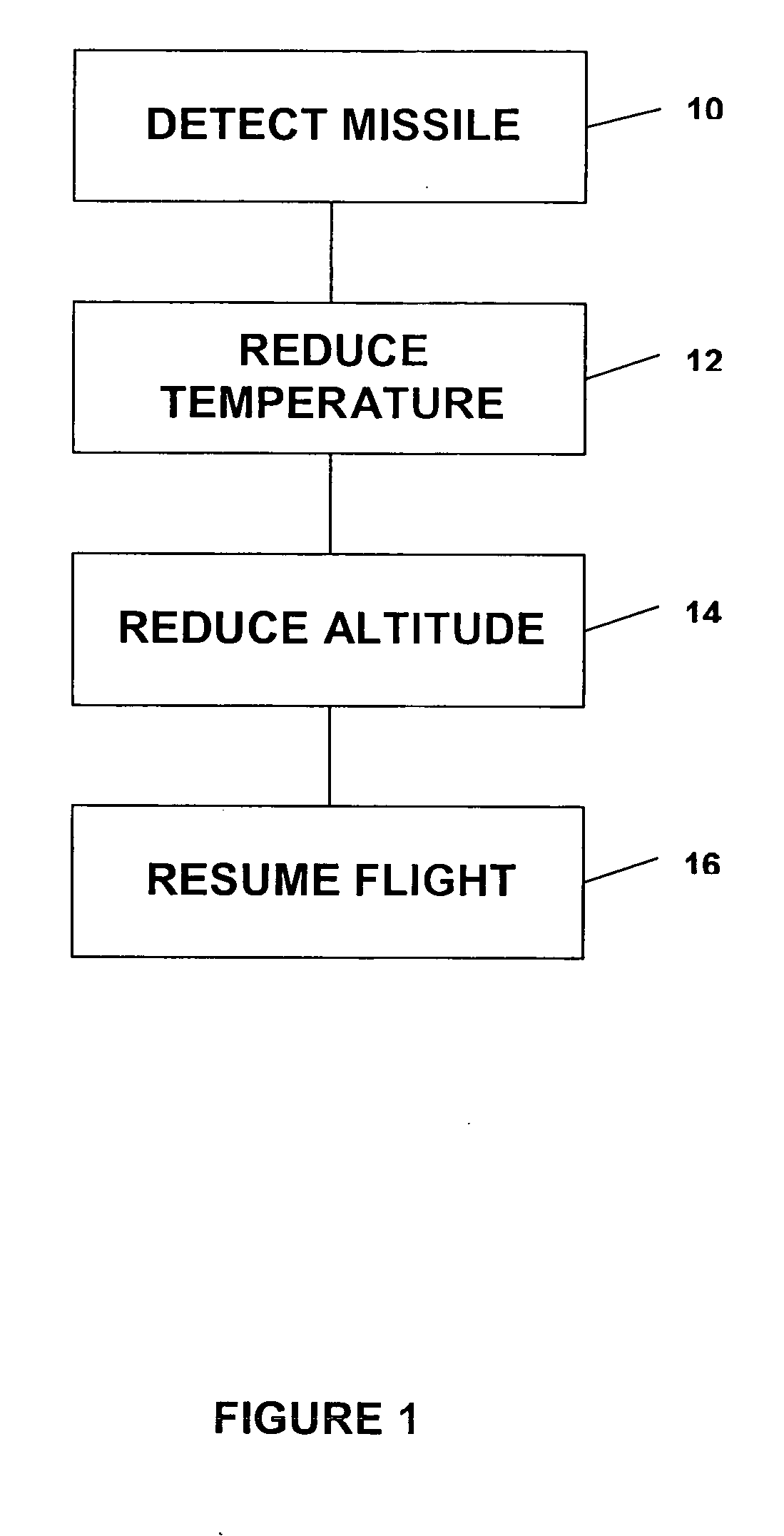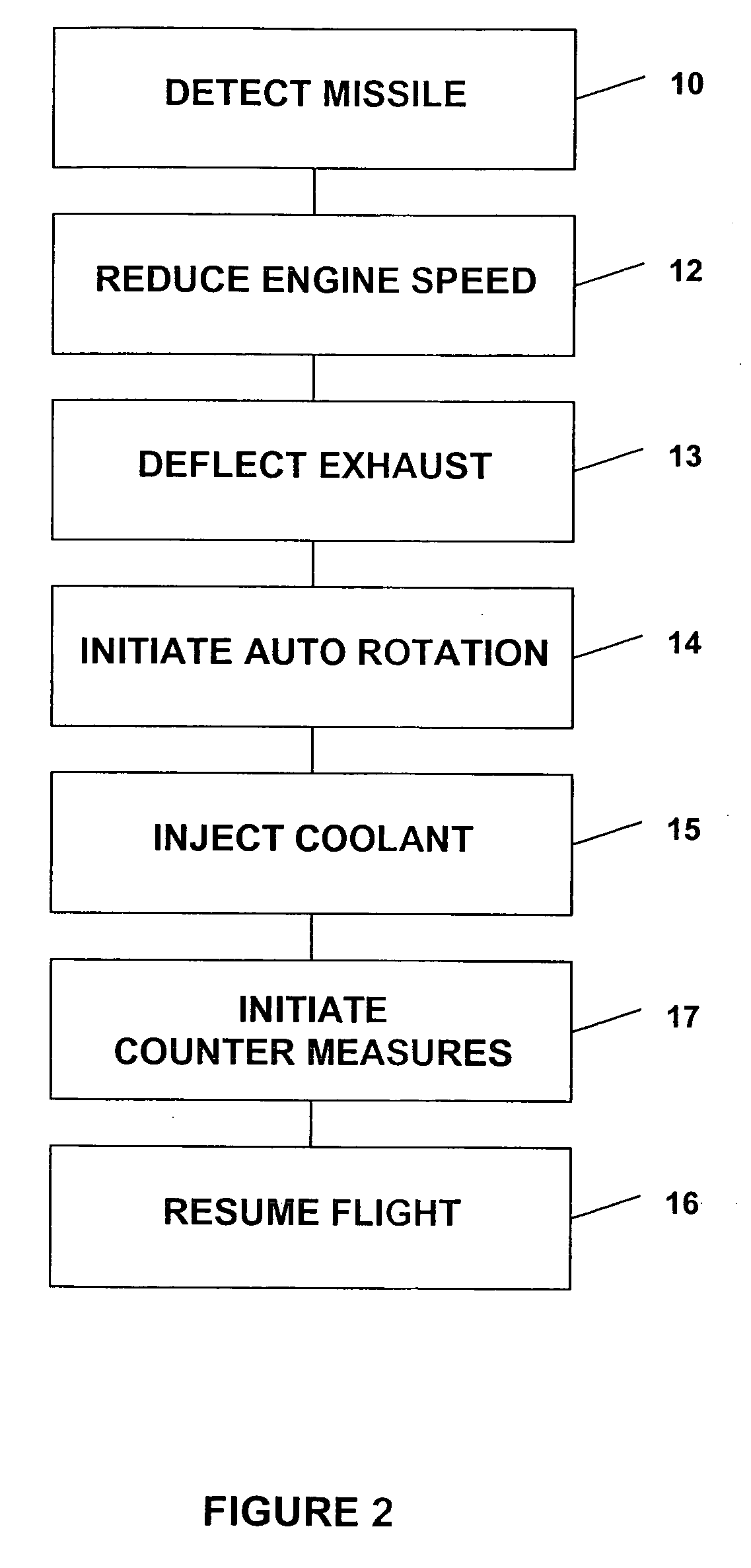Missile defense system and methods for evading heat seeking missiles
a missile defense and missile technology, applied in vehicle position/course/altitude control, process and machine control, instruments, etc., can solve the problems of corporate jets and other non-commercial aircraft being unprotected, the potential threat of such a system exists, and the cost of such systems is estimated at 7 to 10 billion dollars. , to achieve the effect of rapid reduction of altitude, rapid reduction of heat, and rapid reduction of temperatur
- Summary
- Abstract
- Description
- Claims
- Application Information
AI Technical Summary
Benefits of technology
Problems solved by technology
Method used
Image
Examples
first embodiment
[0014] A method for aiding a pilot of an aircraft such as a helicopter to avoid being struck by a heat seeking missile in accordance with the invention is illustrated in FIG. 1. As illustrated, the method includes the step 10 of detecting a threat by a heat seeking missile. The threat is detected by conventional means. For example, missile approach warning systems have been used by the military for some time. Such systems warn of a missile actually targeting the aircraft and are designed to enable the use of evasive maneuvers, electronic warfare and infrared countermeasures.
second embodiment
[0015] In a second step 12 a pilot immediately reduces the heat output of the engine as for example, by reducing the engine speed to idle. The heat output of the engine or engines can be reduced by other steps as will be described in connection with the invention. This reduction in heat is done in an effort to disrupt a missile's guidance system particularly in view of a third step in this embodiment of the invention.
[0016] In a third step 14, the pilot immediately reduces altitude as for example in a helicopter, by rapidly pushing the collective down. The pilot allows the aircraft to auto rotate which has the effect of producing a sharp dive. The altitude may be reduced by 300 feet more or less based on the altitude of the helicopter at the time of a missile detection. After the missile threat has passed, the pilot increases lift in step 16 to regain the lost altitude and resume flight.
[0017]FIG. 2 illustrates a second embodiment of the invention wherein the steps 10 and 12 are es...
third embodiment
[0020] the invention is illustrated in FIG. 3. As illustrated therein, a helicopter 20 includes a missile defense system 22 for protecting the aircraft from a strike by a heat seeking missile. In its preferred form, the missile defense system 22 includes means 23 for monitoring a safe zone. The safe zone is based on altitude, airspeed and the gross weight of the helicopter and allows the initiation of each of the steps as a defense without causing the aircraft to crash. Whether or not the helicopter is operating within a safe zone is disclosed and described in my co-pending application entitled “Methods For Evading Heat Seeking Missiles,” filed on even date herewith. Nevertheless, the defense system 20 activates means 24 for detecting a threat from a heat seeking missile irrespective of whether or not the aircraft is flying in a safe zone.
[0021] The system 22 also includes simultaneous means 26 for simultaneously taking a number of steps to avoid being struck by a heat seeking missi...
PUM
 Login to View More
Login to View More Abstract
Description
Claims
Application Information
 Login to View More
Login to View More - R&D
- Intellectual Property
- Life Sciences
- Materials
- Tech Scout
- Unparalleled Data Quality
- Higher Quality Content
- 60% Fewer Hallucinations
Browse by: Latest US Patents, China's latest patents, Technical Efficacy Thesaurus, Application Domain, Technology Topic, Popular Technical Reports.
© 2025 PatSnap. All rights reserved.Legal|Privacy policy|Modern Slavery Act Transparency Statement|Sitemap|About US| Contact US: help@patsnap.com



